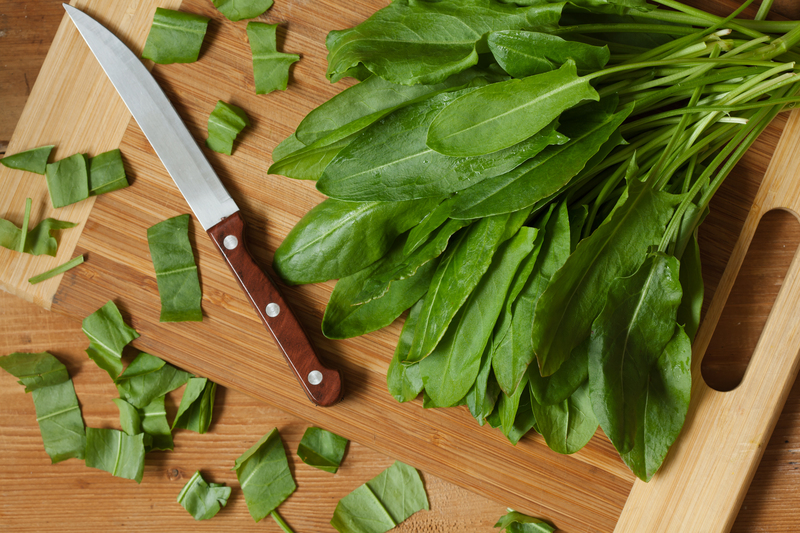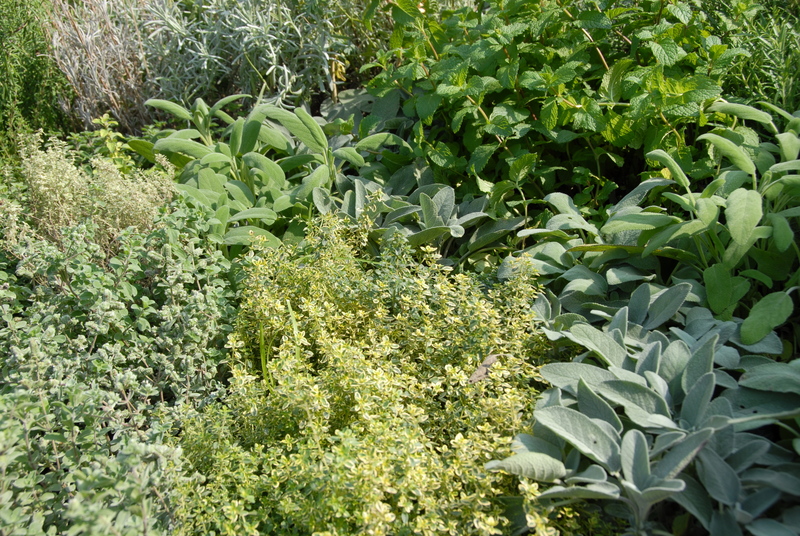Liven Up Your Garden With These Hardy Tropical Beauties
Dreaming of transforming your backyard into a lush oasis? Good news: you don't need to live in the tropics to enjoy vibrant, exotic plants. Hardy tropical plants are available that can thrive in cooler climates, bringing bold colors, dramatic textures, and year-round interest to your outdoor space.
What Are Hardy Tropical Plants?
While true tropical plants usually require warmth and high humidity year-round, many tropical-looking species are surprisingly cold-hardy. These hardy tropical beauties mimic the allure of palm-fringed paradises but can withstand frost and even snow, making them perfect candidates for adventurous gardeners everywhere.

Why Choose Tropical-Looking Hardy Plants?
- Breathtaking Foliage: Huge, bold leaves and unique shapes create a striking visual impact.
- Exotic Blooms: Their vibrant, often fragrant flowers add a touch of the exotic to any garden.
- Dynamic Structure: Many of these plants grow upright, offering height and drama.
- Wildlife Habitat: Some attract butterflies, hummingbirds, and beneficial insects.
- Low Maintenance: Once established, many are easy to care for, requiring modest maintenance.
Best Hardy Tropical Beauties for Your Garden
Ready to liven up your garden? Explore these show-stopping options that bring a tropical feel, yet stand up to cooler temperatures.
1. Hardy Banana Plant (Musa basjoo)
Musa basjoo is famed as the "Japanese Fiber Banana" and is a top choice for bold, tropical gardens in temperate regions. With leaves reaching over 6 feet long, it brings an instant jungle vibe.
Key Points:
- Hardy down to zone 5 with mulch protection
- Fast-growing, can reach 10-12 feet tall in one season
- Produces inedible, ornamental bananas
- Enjoys moist, rich soil and full to partial sun
2. Windmill Palm (Trachycarpus fortunei)
Want a real palm tree in your garden? The Windmill Palm is one of the most cold-tolerant palms, ideal for adding a touch of the tropics.
Key Points:
- Grows up to 20 feet tall
- Survives down to zone 7 (with protection, even zone 6)
- Fan-shaped, evergreen fronds for year-round appeal
- Prefers well-drained soil and a sheltered location
3. Elephant Ear (Colocasia and Alocasia)
With their gigantic, heart-shaped leaves, elephant ears are the epitome of exotic beauty.
Key Points:
- Colocasia are more cold-hardy than Alocasia
- Some varieties (such as Colocasia esculenta 'Chicago Harlequin') return each year to zone 6
- Grow in full sun to part shade, with consistently moist soil
- Excellent for water features and bog gardens
4. Canna Lily (Canna spp.)
Canna lilies dazzle with their colorful flowers and lush, banana-like leaves.
Key Points:
- Flowers in vibrant reds, oranges, yellows, and pinks
- Hardy to zone 7 or 8 (rhizomes can be dug up and stored in colder zones)
- Ideal for sunny borders, containers, and water gardens
5. Hardy Hibiscus (Hibiscus moscheutos)
Enjoy enormous, dinner-plate flowers in late summer and early fall with hardy hibiscus.
Key Points:
- Survives winters as far north as zone 4
- Flowers can be 8-12 inches wide
- Best in full sun and moist, well-drained soil
- Attracts hummingbirds and pollinators
6. Japanese Aralia (Fatsia japonica)
For shady spots, Japanese aralia delivers with huge, glossy, palmate leaves and a truly exotic look.
Key Points:
- Evergreen in zone 8, deciduous in zone 7
- Tolerates low light and drought
- Makes an excellent houseplant or shrub border
7. Castor Bean (Ricinus communis)
Though technically an annual in northern climates, castor bean makes an instant tropical statement with its huge, deeply lobed leaves and spiky seed pods.
Key Points:
- Grows rapidly to 10 feet or more in a single season
- Striking red or green foliage
- All parts are toxic if ingested--plant with caution, away from kids and pets
How to Incorporate Hardy Tropical Plants Into Your Garden Design
Create a Focal Point
Feature one or two larger specimen plants, such as a banana plant or windmill palm, as eye-catching centerpieces. Surround them with lush underplantings of smaller ferns and flowering tropicals.
Layer for Interest and Contrast
- Combine broad-leaved, upright species with fine-textured or variegated companions for maximum contrast.
- Include bright-flowering varieties like canna lilies or hardy hibiscus alongside bold foliage plants.
- Add architectural accents such as tall ornamental grasses.
Container Planting
If you garden in a colder zone, planting hardy tropical plants in large containers lets you move them inside during severe weather. This also allows flexibility in your design and gives seasonal color to patios and decks.
Water Features and Bog Gardens
Many hardy exotics, such as elephant ears or Canna lilies, thrive in wet soils. Place them around ponds, streams, or bog gardens for a lush, tropical feel.
Tips for Growing Hardy Tropical Beauties
Choose the Right Location
- Full sun is ideal for most tropical plants, but some tolerate partial shade.
- Shelter large-leaved plants from strong winds to prevent leaf shredding.
- Ensure protection from harsh winter winds whenever possible.
Soil & Watering
- Rich, organic soil is key. Add plenty of compost or aged manure before planting.
- Water deeply, especially during dry spells. Many hardy tropical plants are thirsty!
- Mulch generously to retain moisture and insulate roots in colder months.
Fertilizing
- Feed monthly during the growing season with a balanced, slow-release fertilizer.
- Use high-potassium feeds to promote vibrant blooms in species like cannas and hibiscus.
Winter Protection
- Add extra mulch over the root zone in late fall, especially in zones at the edge of hardiness limits.
- For tender perennials, consider digging up tubers, bulbs, or rhizomes and storing them indoors until spring.
- Container-grown plants can be moved to a cool, frost-free garage or shed.
Frequently Asked Questions About Hardy Tropical Plants
How Cold-Hardy Are "Hardy" Tropical Plants?
Many popular hardy exotics thrive down to USDA zones 6 or 7, and some, like Japanese fiber banana and hardy hibiscus, can survive even colder climates with winter protection.
Do Hardy Tropical Beauties Need Special Care?
While they are generally robust and low maintenance, a few extra steps--such as mulching and careful site selection--will keep your garden tropical and healthy.
Will My Hardy Tropicals Come Back Every Year?
Most will return reliably from their roots each spring. For borderline hardy species, protect them in severe winters by mulching or overwintering indoors.

Combining Hardy Tropicals With Other Plants
- Mix with Ornamental Grasses: Their upright, feathery forms contrast beautifully with broad-leaved exotics.
- Add Hardy Ferns: Plant Osmunda or Dryopteris for that deep forest, tropical floor effect.
- Bedding Annuals: Bright, long-blooming bedding plants such as impatiens, begonias, or coleus extend the color palette.
- Shrubs with Bold Foliage: Hydrangeas and Japanese maple add structure and complement lush exotics.
Design Inspiration: Hardy Tropical Garden Themes
- Jungle Getaway: Pack in elephant ears, bananas, and cannas for a dense, layered look. Wind winding paths with stepping stones for a sense of discovery.
- Zen Retreat: Pair Fatsia japonica with bamboo and ferns for an Asian-inspired hideaway. Add a water feature for tranquility.
- Modern Tropical: Use architectural plants in geometric planters, combining black mondo grass and red castor beans for drama.
Conclusion: Transform Your Garden with Hardy Tropical Beauties
It's easier than ever to liven up your garden with the magic of the tropics. By choosing the right mix of hardy tropical plants, you can enjoy bold, lush landscapes even in climates far from the equator. Experiment with combinations, embrace bold foliage, and create your own backyard paradise with these nature-friendly, eye-catching selections.
Ready to turn your outdoor space into a year-round tropical sanctuary? Try planting a few of these hardy tropical beauties and discover the transformative power of exotic plants that live well beyond warm climates!